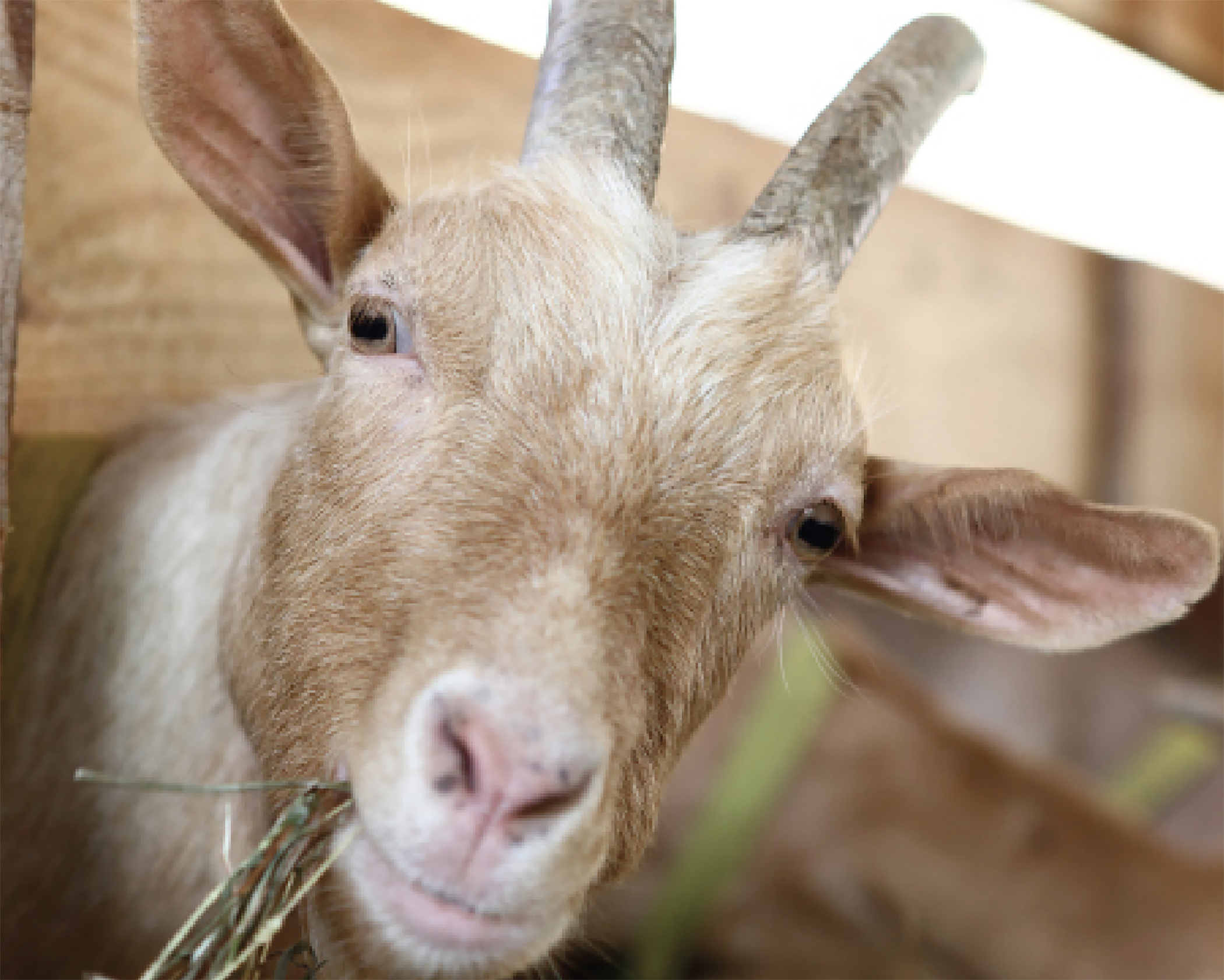Winter Management Practices for Goats

Winter Management Practices for Goats
By Brett Kreifels, University of NE Extension Service, Douglas-Sarpy County Extension
Frequent scratching may indicate your goats have lice, which needs to be controlled.
With all animals, winter is a stressful time. We, as livestock owners, can help reduce that stress by providing our animals with the proper care, feeding and management practices to help ensure our animals thrive during the cold winter months. Goats, while hardy in nature, do require specific care during winter to get them through. Here are a few management items to consider when raising a goat herd through the winter.
Housing
Goats do not require elaborate housing during the winter months. The single most important issue regarding housing is to block the harsh, cold north wind. With their thick coat of hair, goats survive the winter with minimal housing very well. A structure with the opening facing the south provides protection from the north wind, while allowing the infiltration of the warm southern winds and direct access to the warm sunshine. Make sure there is plenty of clean, dry bedding available and easy access to food and water. Frequently change the water to eliminate ice build-up or provide a heated water source using a tank heater or bubbler to keep the water open and accessible.
Feeding
Feeding your goats during the winter is not a complicated process. During the winter, more energy is needed to maintain body temperature and there is less of an emphasis on growth and protein needs at this time; unless your goats are pregnant or lactating and require an increase in their nutritional needs.
The addition of corn or oats can help increase the energy content of feed. Make sure to slowly introduce new feed items to your goats, since a sudden change in a ration can cause acidosis or bloat. Both conditions are potentially fatal to your goats if not caught early.
Always provide a source of roughage in the form of grass, brome or other types of hay. Alfalfa is a great course of protein and energy although care should be given to avoid feeding too much to bucks and wethers for fear of urinary calculi formation. Furthermore, always provide a good salt and mineral source and most importantly, an abundant source of water.
Parasites
Goats should be wormed multiple times a year to guard against stomach and round worms. Worm your goats in November or December, and in the cases of high parasite load, worm again 30 days later to break the lifecycle of the stomach worms and round worms. Using the Faffan Malan Chart (FAMACHA) scoring system will help determine the need to worm. Common wormers approved for goats are Fenbendezole and Morantel. There are many other Extra Label wormers but they need approval by a veterinarian for their use.
Goat lice and mites are increasingly prevalent during the winter months. Mites and lice are irritating to the goat and in some cases, high infestations can cause anemia, poor coat and skin quality. There are a number of drenches, pour-ons, and sprays that will help combat these annoying pests. In some cases, your veterinarian may help by administering an injectable de-lousing medication.
Work with your veterinarian to determine which medication best suits the needs of your herd. Common delousing chemicals include: permethrins, pyrethrins, cyflurins, etc. Signs your goat may have lice include, 1) frequent rubbing up against posts or fence, 2) scratching using the horns or teeth and in some cases, 3) dry flaky skin.
Trim the Hooves
Quarterly hoof trimming can go a long way in terms of preventing hoof problems. With the cold, wet conditions of winter, it is paramount to keep the barn dry and regularly trim the hooves to avoid problems such as foot scald or foot rot. By trimming the hooves, you prevent mud from adhering to spaces in or on the hoof.
Foot scald and foot rot are caused by bacteria that infiltrate the hoof. Foot scald and foot rot both cause lameness in animals but fortunately these conditions are treatable.
Foot Scald
Foot scald is an inflammation of the skin between the hooves. Often, allowing the goat to step in a pan of zinc sulfate is a common treatment. I have had first-hand experience with foot scald and found a 7% tincture iodine sprayed on the hoof and in between the hoof is an effective treatment.
Foot rot is an infection of the hoof wall and its treatment is more extensive. Removal of all the diseased tissue is required and antibiotic injections may need to be administered.
Goats who continually develop foot scald or foot rot should be eliminated from the herd. n

